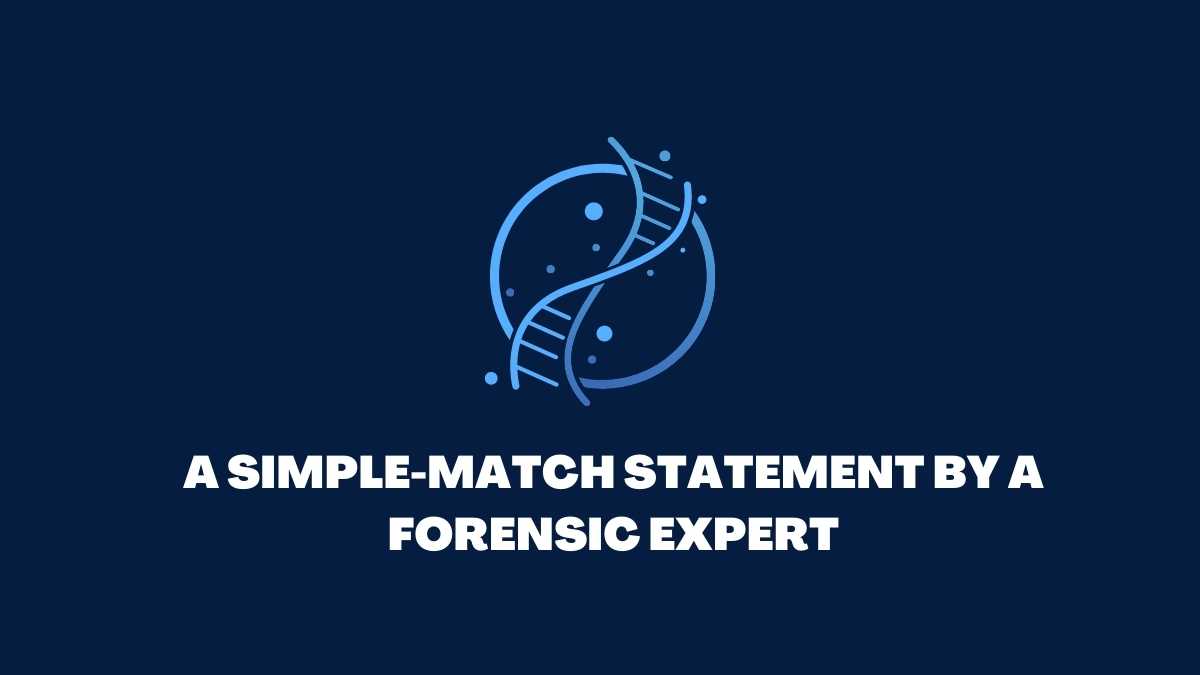Forensic identification can best be defined as the process of linking a suspect, victim, or object to a crime scene through scientific methods and analysis. It involves the collection, preservation, and examination of physical evidence to determine its relevance to a criminal investigation. The goal of forensic identification is to provide impartial, scientific evidence that can be used in court to support or refute an investigation’s findings.
A Simple-Match Statement by a Forensic Expert
A simple-match statement is a declaration made by a forensic expert that the evidence they have examined matches a specific individual, object, or sample. This type of statement is based on a comparison of unique characteristics, such as fingerprints, DNA, or bullet markings, between the evidence and the known sample.
For example, if a forensic expert is examining a bullet found at a crime scene and has a suspect in custody, they may compare the markings on the bullet to the markings on a test-fired bullet from the suspect’s weapon. If the markings match, the expert can make a simple-match statement linking the bullet to the suspect’s weapon.
Bullet-Matching Results
Bullet matching is a forensic technique used to link a bullet found at a crime scene to a specific firearm. This process involves the examination of unique markings left on a bullet as it passes through a firearm’s barrel. The markings on a bullet can be compared to test-fired bullets from a suspected weapon to determine if there is a match.
Forensic experts use high-powered microscopes to compare the markings on the bullets, looking for similarities in the striations and individual characteristics, such as scratches or nicks. If the markings on the bullet and test-fired bullets match, the expert can make a positive bullet-matching result, linking the bullet to the firearm.
Biological Evidence
Biological evidence is any type of physical evidence that contains biological material, such as blood, saliva, semen, or hair. This type of evidence can provide important information about the identity of a suspect or victim, as well as the events that took place at a crime scene.
For example, bloodstains found at a crime scene can be analyzed to determine the blood type of the individual who left the stain. This information can be used to exclude or include a suspect as the source of the bloodstain. Similarly, DNA analysis can be used to link a suspect or victim to a crime scene through the comparison of DNA samples.
Table: Types of Forensic Identification Evidence
| Type of Evidence | Description |
|---|---|
| Fingerprints | Unique ridge patterns on the fingertips that can be used to identify an individual |
| DNA | Unique genetic material that can be used to identify an individual or link them to a crime scene |
| Bullet markings | Unique markings left on a bullet as it passes through a firearm’s barrel |
| Bloodstains | Stains left by blood that can provide information about the identity of a suspect or victim |
| Hair | Strands of hair that can provide information about an individual’s identity or movements |
| Footprints/tire tracks | Unique markings left by shoes or tires that can be used to identify an individual or vehicle |
What is forensic identification?
Forensic identification is the process of linking a suspect, victim, or object to a crime scene through scientific methods and analysis. It involves the collection, preservation, and examination of physical evidence to determine its relevance to a criminal investigation.
What is bullet-matching in forensic identification?
Bullet-matching is a forensic technique used to link a bullet found at a crime scene to a specific firearm. This process involves the examination of unique markings left on a bullet as it passes through a firearm’s barrel and comparing those markings to test-fired bullets from a suspected weapon.
What is considered biological evidence in forensic identification?
Biological evidence is any type of physical evidence that contains biological material, such as blood, saliva, semen, or hair. This type of evidence can provide important information about the identity of a suspect or victim and the events that took place at a crime scene.
How is DNA used in forensic identification?
DNA can be used in forensic identification to link a suspect or victim to a crime scene through the comparison of DNA samples. This process involves the analysis of unique genetic material that can be used to identify an individual or link them to a crime scene.
